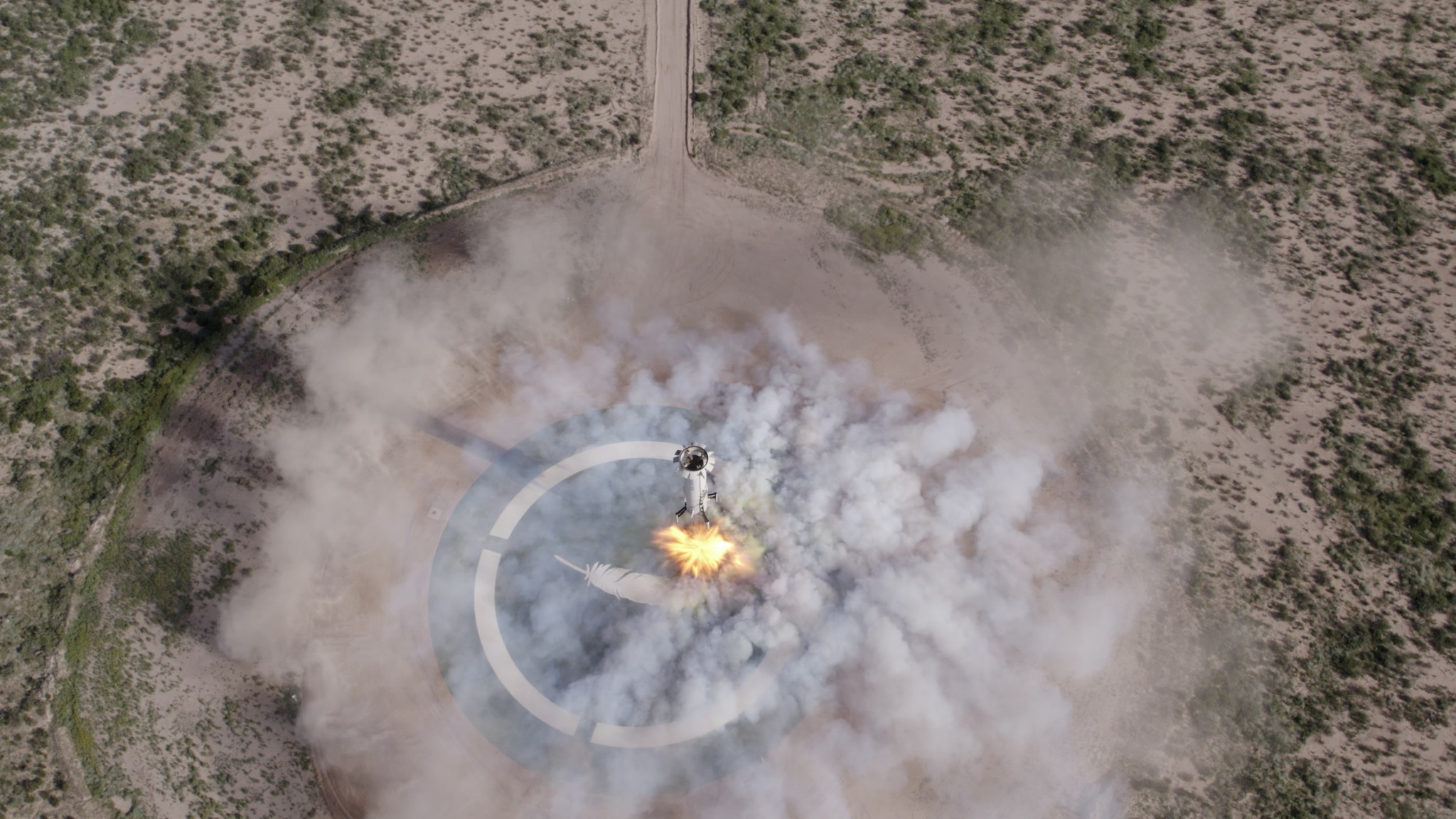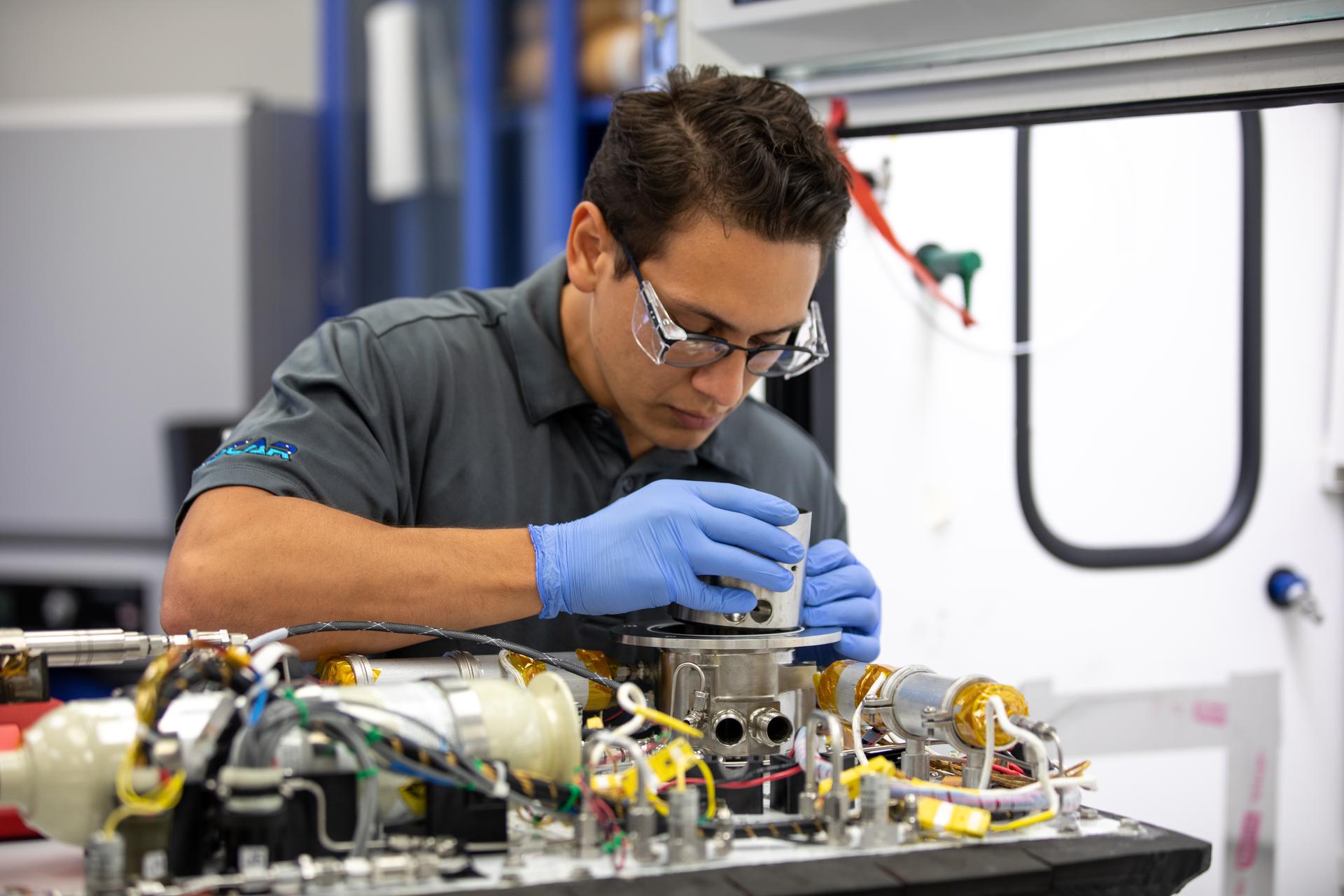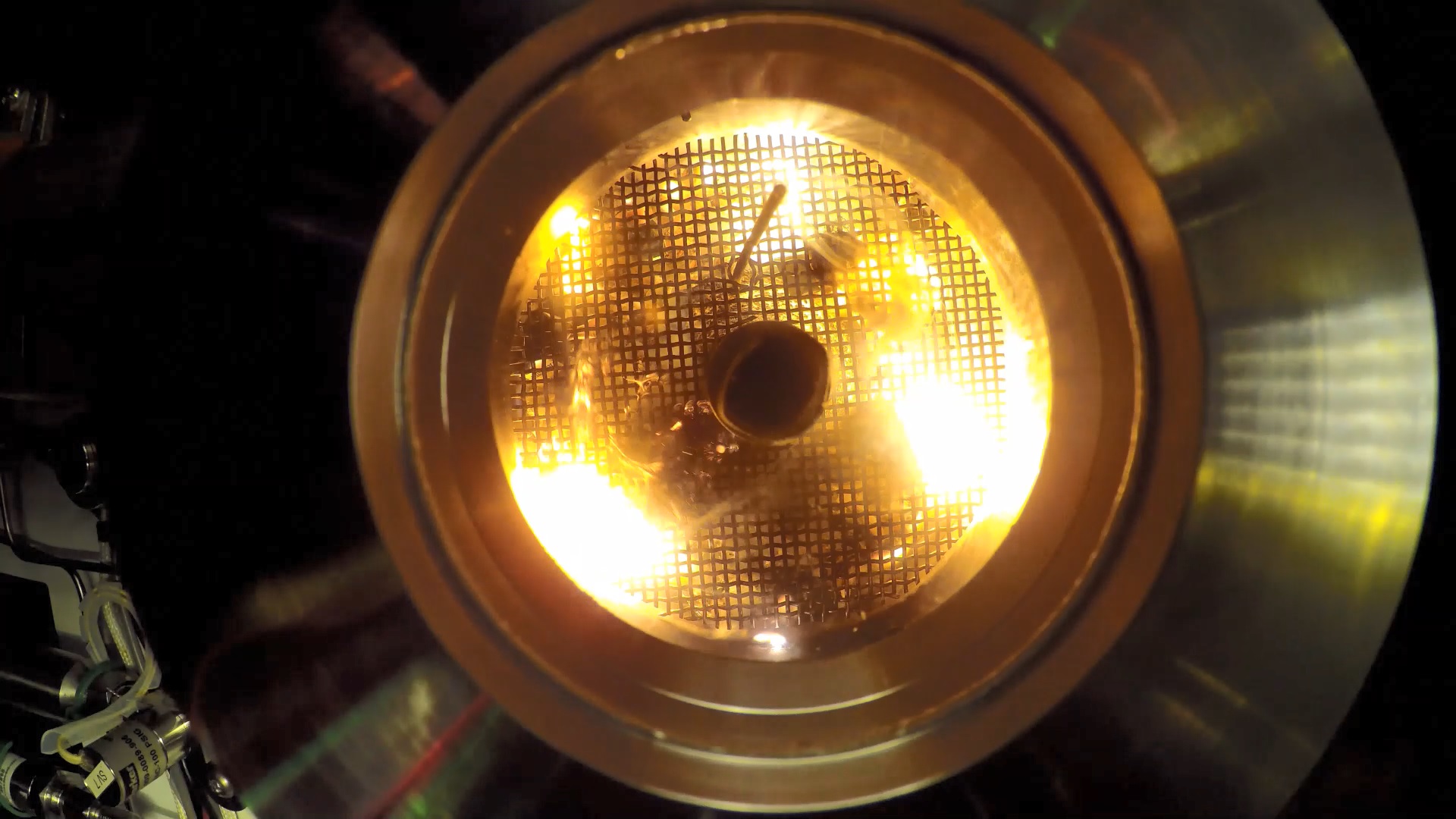
By Jim Cawley
NASA’s Kennedy Space Center
Data from a NASA payload investigating a new method for dealing with trash in space has researchers at NASA’s Kennedy Space Center in Florida excited following the Aug. 26 flight test on Blue Origin’s 17th New Shepard mission.
The Orbital Syngas Commodity Augmentation Reactor (OSCAR) team watched the launch from a neighboring hill, witnessing liftoff, booster landing, and payload touchdown. Though, as researchers, they became even more energized after landing.
“Working at Kennedy, I’m fortunate to see rocket launches on a regular basis,” said OSCAR’s Co-Principal Investigator Ray Pitts. “But there is something extra special about witnessing a launch with precious cargo that you helped bring to reality. Then, getting it back and seeing everything worked as designed, and being able to go through the new data is just as thrilling.”
OSCAR tests technology to convert trash and human waste generated during spaceflight into useful gases such as carbon dioxide, carbon monoxide, water vapor, and methane.
NASA’s Space Technology Mission Directorate (STMD) helped develop the technology on the ground and further advance it with the suborbital tests. OSCAR started as an Early Career Initiative project in 2018. It launched the first time on a Blue Origin flight in December 2019 and was selected for a second flight via the Flight Opportunities program.
“The data we gathered from this flight, alongside lab tests, indicate we can make some real progress in maturing an appropriate space-ready, trash-to-gas system for future development,” said Thermofluids Engineer Malay Shah.
Testing in microgravity is key to maturing the technology. On the Aug. 26 flight, OSCAR was one of several NASA-sponsored and commercial experiments carried aboard a capsule launched by New Shepard. The maximum ascent velocity reached 2,232 mph during the 10-minute and 15-second mission, and payloads experienced about three minutes of microgravity during the flight before touching down at Blue Origin’s landing pad, about two miles from the launch site.
The OSCAR team at Kennedy has been hard at work since then, analyzing the data collected during the flight and comparing it to tests they have run in the lab. They noted cooler reactor temperatures in microgravity and a slightly higher concentration of carbon monoxide production compared to test in gravity. The latter isn’t necessarily a bad thing, Pitts noted, as a recovery system could use both the carbon dioxide and carbon monoxide to produce water and methane. Alternatively, astronauts could vent the gases from the spacecraft to reduce the mass and volume of waste onboard. The team is consolidating their findings and will share them with NASA and the broader scientific community.
“Trash is treasure in space,” said Dr. Annie Meier, senior technologist for trash management at Kennedy and chief of the Exploration Systems and Development office. “The mass – whether as a solid or gas – will be very useful when you are on a space mission. OSCAR is the path for that vision of reusing waste.”
Finding a safe and efficient way to extract these useful resources – such as water, oxygen, and fuel – from waste will be important especially for long-duration space exploration under NASA’s Artemis missions, which will land the first woman and first person of color on the Moon. NASA will collaborate with commercial and international partners to establish the first long-term presence on the Moon and take the next giant leap: sending the first astronauts to Mars.
“We have demonstrated you can design on the ground for trash-to-gas operation in microgravity,” Meier said. “The goal for OSCAR is to provide a pathway toward sustainable human space exploration.”




























